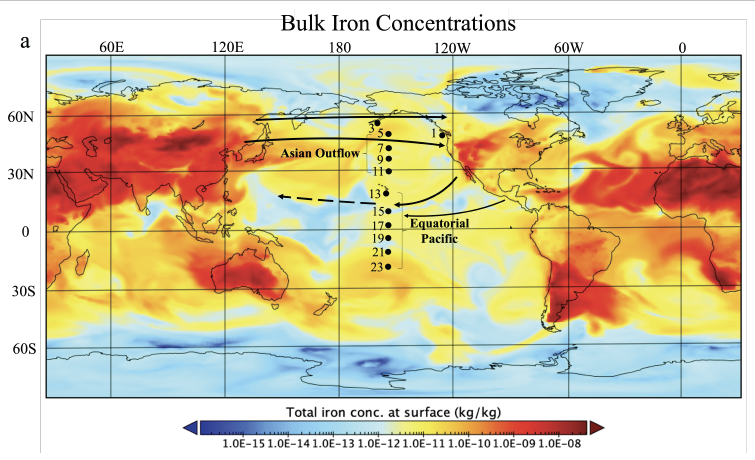
Zach Bunnell, a doctoral student in the lab of Tim Conway, is first author of the paper published in Geophysical Research Letters.
“Alongside the nutrients nitrate and phosphate, trace metals such as iron and zinc are required for metabolic processes by phytoplankton in the surface oceans. Atmospheric input from terrestrial sources (dust, wildfires, pollution) are a major source of iron to the ocean. Our recent study analyzing the stable isotope ratios of iron (and zinc) aerosols collected over the North Pacific (from September to November 2018) shows that while aerosols north of 20°N comprise natural and human-derived iron (and zinc) from East Asia, aerosols to the south of 20°N are strongly influenced by Californian wildfires (indicated by heavier than natural isotope ratios) during the low dust-season/North American wildfire season. Previously, iron aerosols with ‘heavy’ isotope signatures have been a topic of research, but not yet constrained to a specific source. Our work utilized a daily iron model output to compare with observational data, finding that these ‘heavy’ values are caused by wildfires. Previously, wildfire iron was thought to have a ‘light’ isotope signature because of plants, but in fact we think that organic-rich Californian soils, entrained during wildfires, contribute ‘heavy’ iron to our aerosols. This means that wildfires may provide more iron to the Equatorial Pacific than previously thought, especially as the climate changes. Interestingly, a 2021 study by Weiyi Tang, assistant professor of chemical oceanography at the College of Marine Science, found that wildfires in Australia can trigger phytoplankton blooms in the South Pacific. We think these two studies make good companions.”
